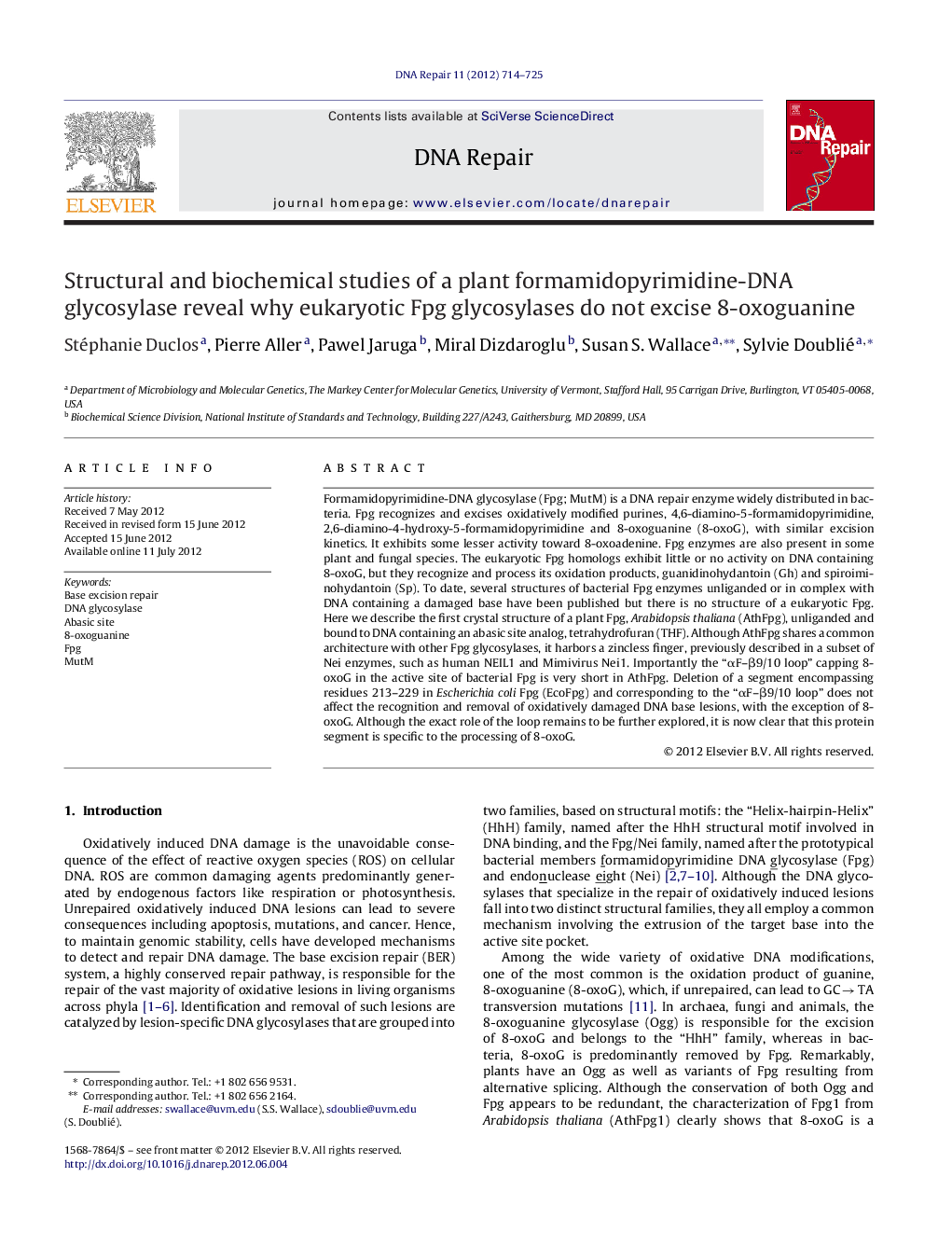| Article ID | Journal | Published Year | Pages | File Type |
|---|---|---|---|---|
| 1980252 | DNA Repair | 2012 | 12 Pages |
Formamidopyrimidine-DNA glycosylase (Fpg; MutM) is a DNA repair enzyme widely distributed in bacteria. Fpg recognizes and excises oxidatively modified purines, 4,6-diamino-5-formamidopyrimidine, 2,6-diamino-4-hydroxy-5-formamidopyrimidine and 8-oxoguanine (8-oxoG), with similar excision kinetics. It exhibits some lesser activity toward 8-oxoadenine. Fpg enzymes are also present in some plant and fungal species. The eukaryotic Fpg homologs exhibit little or no activity on DNA containing 8-oxoG, but they recognize and process its oxidation products, guanidinohydantoin (Gh) and spiroiminohydantoin (Sp). To date, several structures of bacterial Fpg enzymes unliganded or in complex with DNA containing a damaged base have been published but there is no structure of a eukaryotic Fpg. Here we describe the first crystal structure of a plant Fpg, Arabidopsis thaliana (AthFpg), unliganded and bound to DNA containing an abasic site analog, tetrahydrofuran (THF). Although AthFpg shares a common architecture with other Fpg glycosylases, it harbors a zincless finger, previously described in a subset of Nei enzymes, such as human NEIL1 and Mimivirus Nei1. Importantly the “αF–β9/10 loop” capping 8-oxoG in the active site of bacterial Fpg is very short in AthFpg. Deletion of a segment encompassing residues 213–229 in Escherichia coli Fpg (EcoFpg) and corresponding to the “αF–β9/10 loop” does not affect the recognition and removal of oxidatively damaged DNA base lesions, with the exception of 8-oxoG. Although the exact role of the loop remains to be further explored, it is now clear that this protein segment is specific to the processing of 8-oxoG.
Graphical abstractSuperposition of the AthFpg (88/THF complex (pale blue) with the BstFpg/8-oxoG complex (purple).Figure optionsDownload full-size imageDownload high-quality image (157 K)Download as PowerPoint slideHighlights► We present the first crystal structure of an eukaryotic Fpg, AthFpg. ► AthFpg is unusual in that it does not cleave 8-oxoguanine. ► AthFpg harbors a very short αF–β9 loop in its C-terminal domain. ► Deletion of that loop in E. coli Fpg impedes 8-oxoG cleavage specifically. ► The αF–β9 loop of Fpg is specific for the 8-oxoG lesion.
